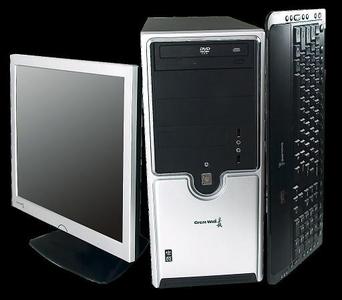 Before talking about enterprise content management, you may think of theoretical topics such as data analysis and knowledge management. When discussing the topic again today, people have focused on actual strategies and application guidelines. Because of the rapid growth of corporate data, the introduction of mass storage systems may not solve the problem. The storage system must cooperate with the brand-new management strategy in order to make the best use of it and meet the surging data flow with limited resources.
Before talking about enterprise content management, you may think of theoretical topics such as data analysis and knowledge management. When discussing the topic again today, people have focused on actual strategies and application guidelines. Because of the rapid growth of corporate data, the introduction of mass storage systems may not solve the problem. The storage system must cooperate with the brand-new management strategy in order to make the best use of it and meet the surging data flow with limited resources. The challenge of managing unstructured data Existing databases have matured in the management of structured data. However, the convergence of unstructured data within the enterprise has brought new challenges. It depends on storage systems and content management applications. co-operate. The best approach is to introduce applications appropriately at different stages of content management, covering the creation, protection, migration, archiving, and application of data in a comprehensive manner.
Methodical content management strategy starts from the beginning of data creation. The basic principle is to properly classify data into dynamic data, static data, and controlled data according to their importance, in line with proper management and protection laws. With the value of data, you can use the "Information Lifecycle Management" strategy to move it to different carriers and increase cost-effectiveness.
The success or failure of content management strategies is often due to data migration. A complete data migration application must be able to automatically migrate data from the distributed local and remote heterogeneous storage architectures to the backup system. The process should be "transparent" so that the server will not notice the movement of data, and at the same time maintain a close connection with the storage system to avoid hindering the normal operation of the business.
After the data migration is completed, it must be properly filed. In the past, companies mostly used tape devices for nearline or offline storage. However, with the popularization of network communications, online data has rapidly increased and the original storage architecture has become overwhelming. Enterprises have to add online storage devices, and the cost is also expensive. If you can save this data in a near-line hard disk array, availability and cost-effectiveness will increase greatly.
It can be seen that the new generation of solutions has introduced a unified storage architecture that integrates the functions of various types of storage systems and stores data in a combination of online, nearline, and offline approaches. This "meeting through" storage concept not only simplified the storage architecture, but also solved the problem of interactive compatibility and improved data availability.
Software Performance Highlights Advantages Enterprise content management is gaining momentum, accelerating the "softening" of enterprise storage. Different brands of storage products are similar in hardware, and the difference is more in software configuration. From the above we can see that software is required in every step of content management and its importance is no less than storage hardware. Therefore, the success and failure of today's storage solutions depends to a large extent on vendors' ability to provide robust and proven software solutions.
The most ideal situation is that the manufacturer knows how to develop its own storage software and operating system, which complements the hardware system and becomes a unified storage system that combines software and hardware, is fully compatible, and has many functions.
Tinned Copper Clad Copper TCCC
Corrosion-Resistant Copper-Clad Tinned Wire,Copper-Clad Copper Tinned Wire Production,Copper-Clad Copper Tinned Wire Processing,Copper-Clad Tinned Wire
changzhou yuzisenhan electronic co.,ltd , https://www.yzshelectronics.com